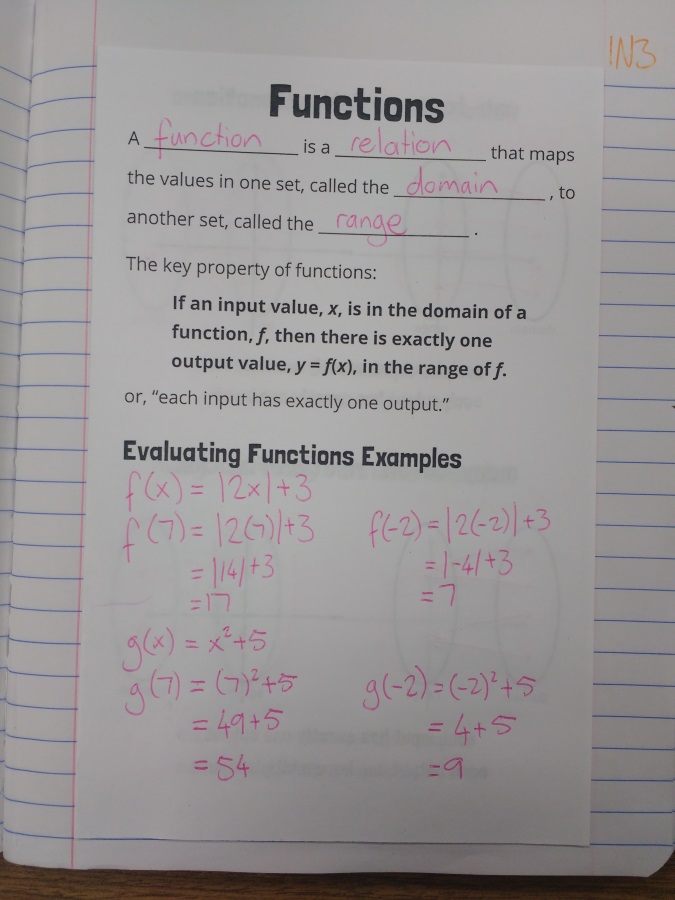I’ve decided to make functions the key focus of the first few units of Algebra 2 this year. I mentioned this in my post about my SBG skill lists:
This year, the start of the [Algebra 2] course is going to
focus on functions, transformations and inverses. For quadratics that means only dealing with vertex form, as well as showing the relationship to square roots. We’ll cover all the functions that way, before coming back to all the other algebra we missed along the way. So we’ll cover quadratics again, including all the factoring and solving stuff.
With that in mind, I thought I’d better make sure my students understand what a function is.

This is the front, basically just explaining what a function is. The examples on the bottom section were actually done after the notes inside. You could really use any examples you wanted. I chose these ones because this first unit focuses on absolute value functions, and I figured they should at least be able to evaluate quadratics, even if they don’t know anything else about them yet.

This is the part I’m most proud of. I think it lets students see clearly what the difference relation types are. I know it’s traditional to talk about the vertical and horizontal tests in this situation (and I did mention them briefly), but I decided to go back to the basic definitions of one-to-one, etc. and let students develop an understanding from those definitions. I was glad that by the time we did the last few diagrams, students were suggesting what the diagrams should be without any prompting.
Though they sometimes have to be prompted with “does each output have exactly one input,” most students have been good at recognizing the difference between one-to-one and many-to-one, which is critical as inverses are coming up soon. They often get many-to-one and one-to-many mixed up. They know which is which, they just get the names confused. I had a student say at one point, “So, it’s the number it goes from to the number it goes to, right?” Then after realizing what she’d just said, added “Oh, I guess that makes sense.” So, at least one of them has made that connection!
I know that it’s typical to make a mistake as a teacher and just claim it was to “see if you’re paying attention,” but in this case, having to cross out the bit that said “function” for one-to-many and many-to-many really was deliberate. (I promise I’m not just saying that!) Making students have to edit the page like this was an attempt to drive the point home that these are not functions. Thankfully, some of my students did notice that these sections contradicted the notes on the front of the foldable, and suggested it needed changing before I did.